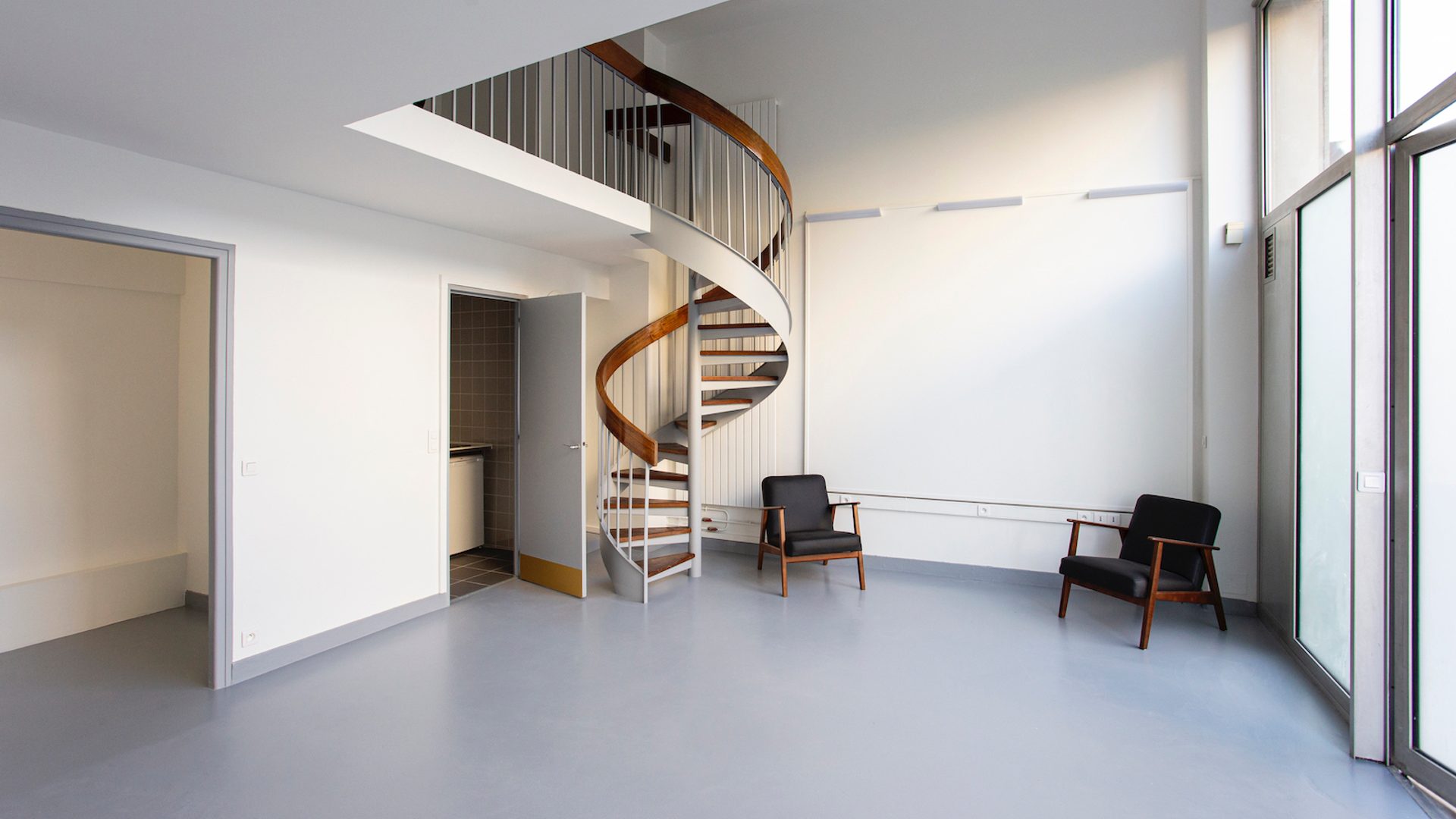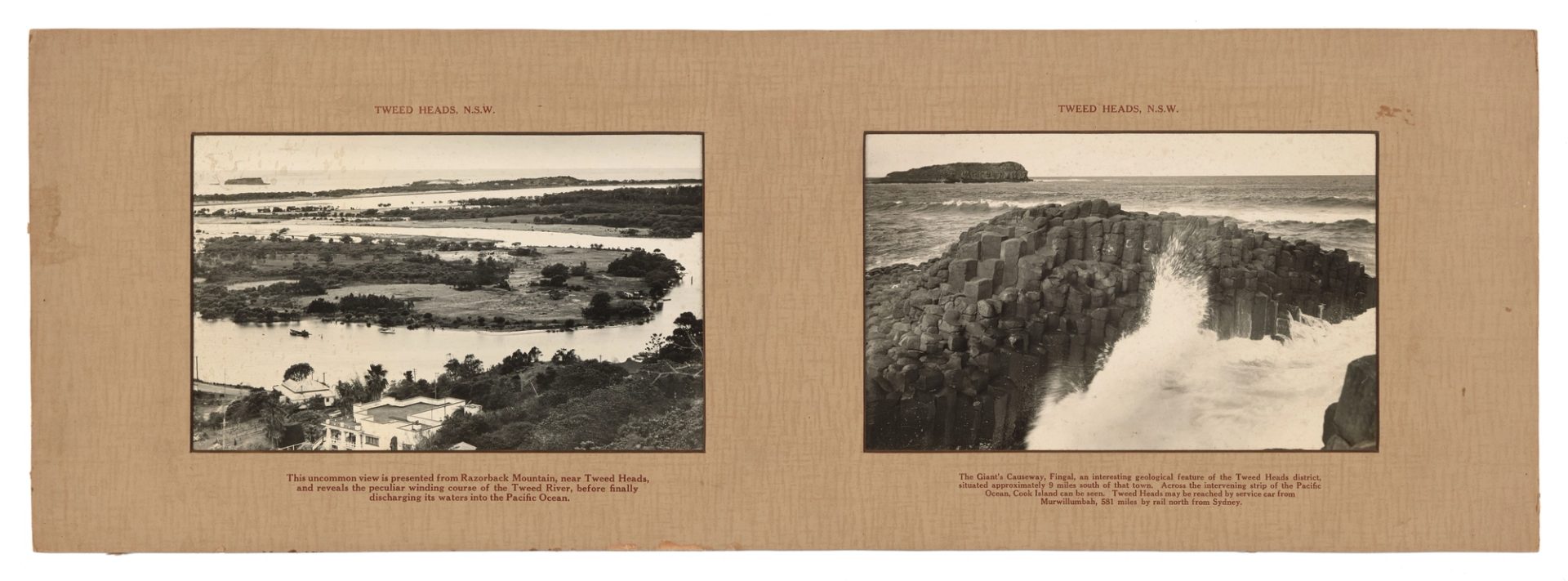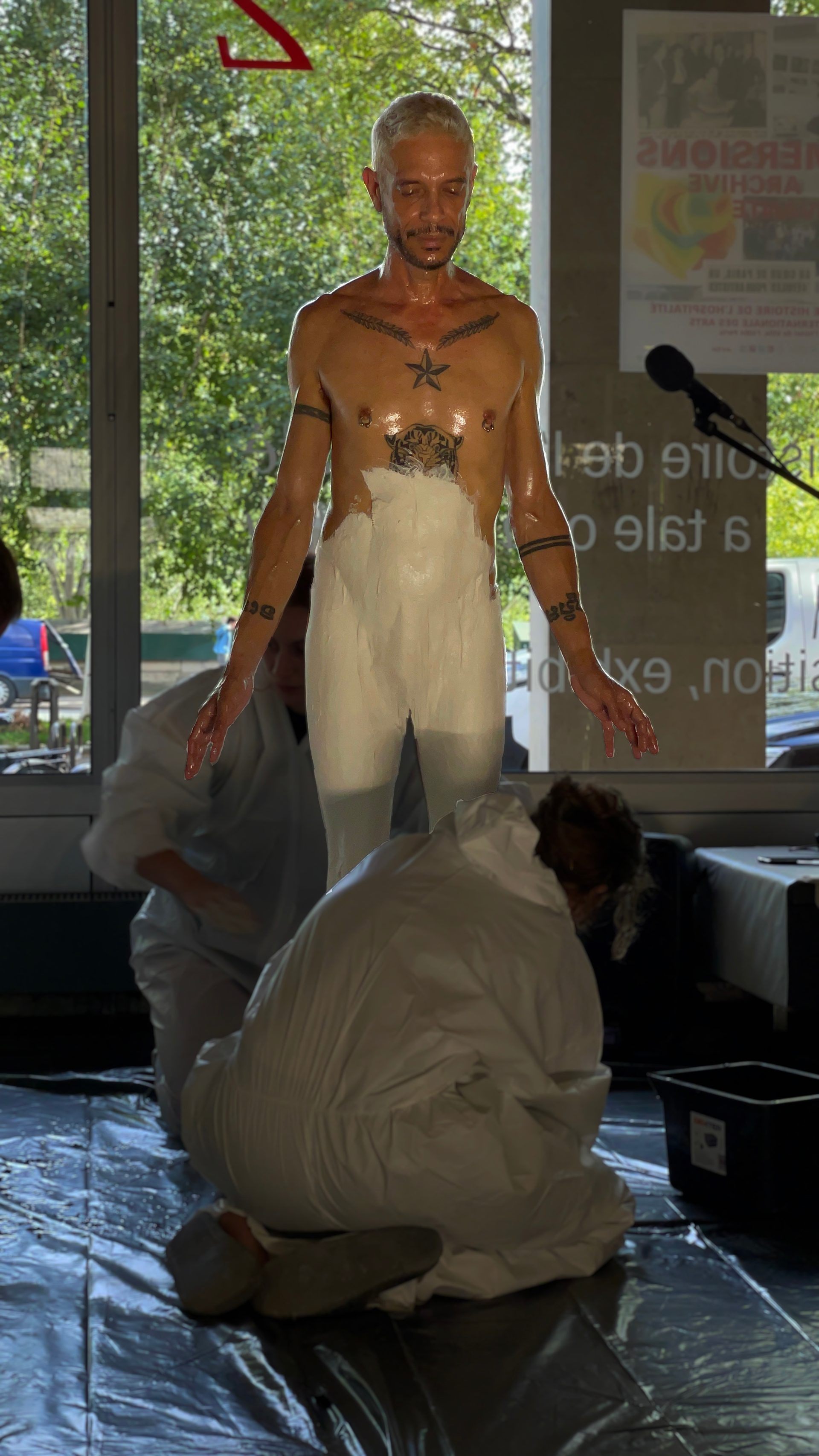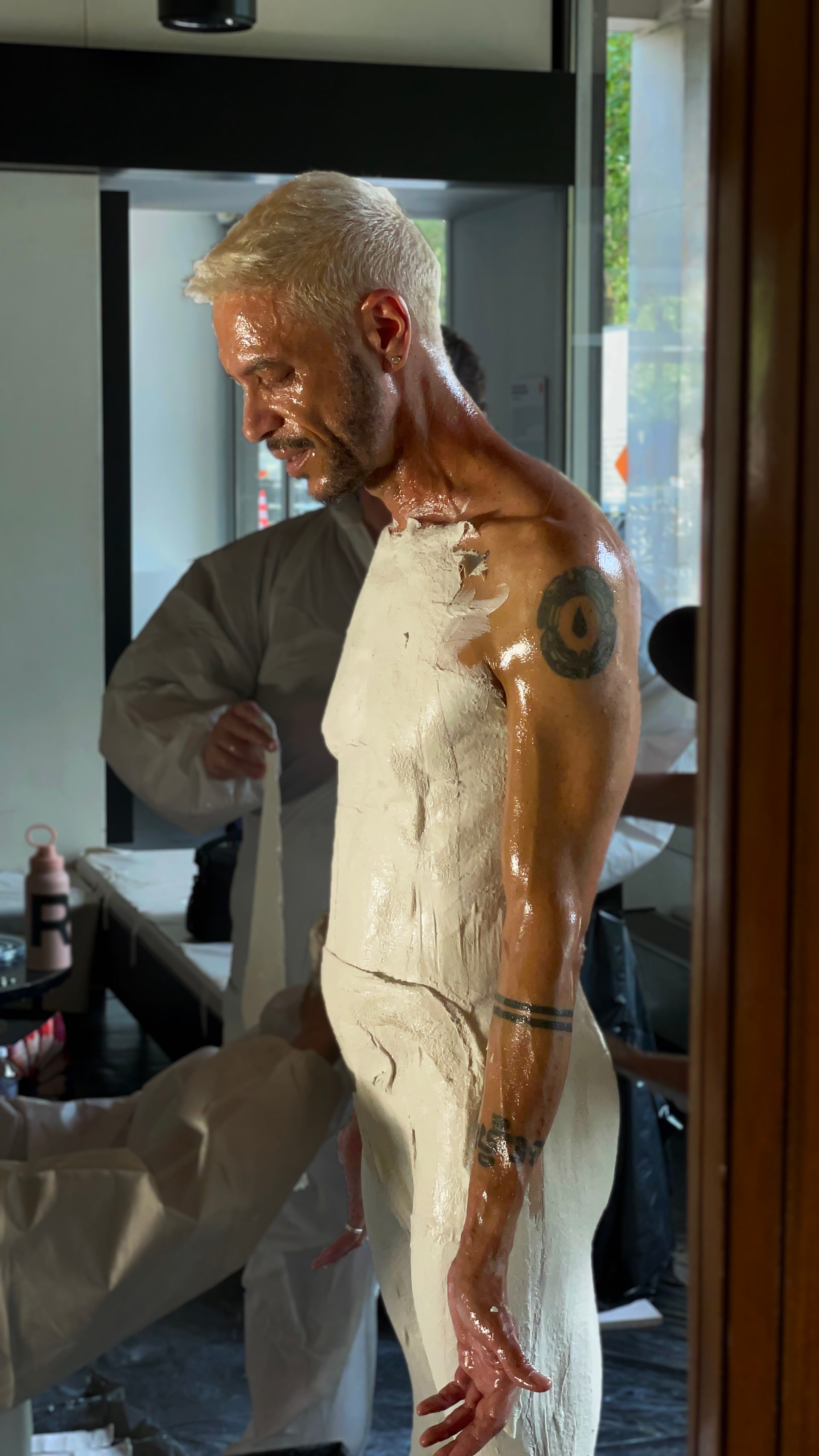Daniel Browning

Bundjalung, Kullilli and South Sea Islander journalist and storyteller Daniel Browning reflects on his 2023 galang residency in Paris, a Powerhouse initiative in partnership with Cité internationale des arts.
I’m Daniel Browning, a Bundjalung and Kullilli fulla from the far north coast of NSW. I grew up on the Tweed coast, and my mob is from Fingal and South Tweed Heads. I am one of four. I am an ABC journalist and radio broadcaster, and Editor Indigenous Radio leading the longstanding flagship Indigenous programs Awaye! and Speaking Out. I also present The Art Show podcast. My passion is for telling untold or deliberately unremembered stories.
Ayeesha Ash What drives you to create/do the work you do?
Daniel Browning I’m compelled by a need to tell stories, and to straighten the historical record where it obscures or forgets the key role First Nations mob have played in Australian history.
AA What motivated you to apply for a galang residency?
DB Initially I want to close the circle on two podcasts I made about two Aboriginal protagonists, actual historical figures. To finish their stories. They both ended in Europe, and went over for radically different reasons, at a time in our history when we in eastern Australia were being confined to missions and reserves. Their cultural memory exists only in Europe, and their presence was fairly well documented. So it made sense to apply for the galang residency, as France is a key location in the story of one of the men, who posed for an anthropological cast in Lyon in 1883. It’s kept in a museum, and is incredibly likelike. The story of how the cast came to be there, what it represents and what it tells us, firstly as a portrait of an Ancestor about the history of representation and, as a relic of the Western imagination, is a cracking good yarn. The other story I am trying to tell is that of the Aboriginal rights activist Anthony Martin Fernando, who went into self-imposed exile and wandered Europe for nearly fifty years telling anyone who would listen that Australia was exterminating our people. He was possessed by the fire in his belly, and never wavered from this course. He didn’t seek allies, nor was he pleading our humanity. He was as politically astute as he was driven. He believed that there was no hope for social justice or an equitable future within Australia and felt that agitating overseas would bring external pressure to bear on Australian governments to change their policies. He was single-minded to the point of being obsessional, a bit like I am about his story!
AA What did it mean for you to gain a galang residency in Paris?
DB The residency was life-changing. I got to focus solely on these two stories and these two empowered Ancestors. I felt their presence over there, as if they were directing me. I firmly believe they want their stories to be told, and I have proved myself by holding their memory for the past decade. They trust me and I owe it to them to discover precisely what happened, and to myself, to finish what I started. It’s a joy, but it’s also a responsibility.
AA Did you refine/change any of your goals between applying for and then gaining the residency?
DB Absolutely. I was going make two podcast episodes but now I’m researching and writing a narrative history/memoir/double biography, in a literary non-fiction work told in the first person! It also crystallised that my future is not in journalism, which I genuinely feel has failed miserably to represent us and our interests and is a lost cause. I am sick of pleading our humanity. As the media’s coverage of the failed Referendum proved so clearly, the level of public discourse on racial politics in Australia is base and illiterate. So much so that I can’t be part of it anymore. This late career change is a big risk financially, and a gamble personally and professionally, but I honestly feel that the best way to communicate isn’t always with a microphone.
AA What skills and knowledge did you want to develop during your galang residency?
DB I wanted to come to grips with what I loosely call the European archive, its depths and its extremities. I realised pretty soon that wouldn’t be possible in a lifetime, let alone a three-month residency. I recalibrated the project to be about building my case that both men are indeed ‘alive’ with tangible evidence of their presence still to be found and that their cultural memory can, and will return where it can be instructive in the way we teach Australian history.
‘I’m compelled by a need to tell stories, and to straighten the historical record where it obscures or forgets the key role First Nations mob have played in Australian history. ’
AA What are the outcomes of building these skills and knowledge?
DB The outcomes are the research findings themselves. I proved to myself, and any potential funder, that there is more to the story of both men. One of the men was unknown, except for his approximate date and place of birth, and the fact that he travelled with two countrymen. Well, I found a cache of about eight or nine photographs – portraits, carte-de-visites in Switzerland and two other anthropological casts, one in Paris and the other in Dresden, as well as two more photographs in Berlin and two more in Lyon. Just based on the photographs alone it’s possible to create a speculative history of his time in Europe – it’s plainly etched in his face. I found pages and pages of references to him in digitised newspapers in Germany and eventually something like a death notice for one of his companions. Three separate sources now confirm the death of that individual, who also appears in the photographic archive in Berlin, in a classic anthropological front and side profile image which looks disturbingly like a police mugshot. I almost broke down when I saw that image, it was so confronting. My research findings in Fernando’s case were just as ground-breaking – I found the exact location of his grave in a cemetery in outer London and paid my respects twice. I also discovered the only known photograph of Fernando buried in the archives of the Belgian police. Sources mention that this fine-boned Aboriginal man, who is best known for picketing Australia House in London wearing an oversized military greatcoat pinned with toy skeletons, had one particularly distinctive feature. “The man’s a walking graveyard”, they wrote “but his eyes are on fire”. Well, the photograph confirms it.
AA What are some highlights of how you worked during the residency
DB The gift of the residency is focus, and for the first time in my working life I was able to silence everything else and key into these two individuals, as a journalist investigating their stories, but also as a blackfella who considers them as revered Ancestors.
AA Who are the main audiences for the body of work developed during the residency?
DB The work I am undertaking long-term – the research and data collection and the broader literary project which was birthed during the residency – is for a general Australian audience I suppose. I would hope that the book is widely read, and that it finds a global audience on the basis of human interest alone. These are extraordinary lives, and I want them to be known, particularly by our young people – they are examples of two Ancestors who exercised agency, personal sovereignty and transnational mobility – their personal freedom – at the precise moment in history when their countrymen in eastern Australia were being actively – and forcibly – deprived of those rights. Rather than disenfranchised colonial subjects under the control of the state, they were empowered actors in the narrative of global history.
AA What does your work mean for them?
DB I hope the general reader would think slightly differently about Australian history, and that they question the racist mythos of an isolated, defeated and incurious people – we certainly are not that, and never were.
‘The gift of the residency is focus, and for the first time in my working life I was able to silence everything else and key into these two individuals, as a journalist investigating their stories, but also as a blackfella who considers them as revered Ancestors.’
AA What are some of the most important connections you’ve made through this residency?
DB By necessity my creative practice is solitary. Research isn’t really a team sport. I did however meet some extraordinary people, and extended myself into social environments where my research would be tested fairly openly. In trying to explain my work to others, sometimes across language barriers, I learnt to break it down into its’ essential parts. The guts of it. I was able to build relationships within the European museum sector, which need to be nurtured outside the residency if they are to lead anywhere. I also developed strong contacts with the Australian Embassy in Paris, and the French Embassy in Canberra. I’m excited to see where that leads.
AA What have you learned from them?
DB I’ve learnt that Europe is an old-school social network writ large. How you interact with people in one context matters, and how you socialise is part of the work. One person meets you, likes you, and recommends you to the next person. If you want to gain access to a collection, to see an ancestral object or artefact, you have to do whatever it takes to prise the door open. Be willing to extend yourself, and don’t take no for an answer. Try again. Persist. Change tack. Persist. Recalibrate. You’ll get there, even if it’s by sheer force of will.
AA What have you enjoyed most about Paris – the people, the city?
DB Paris is a state of mind. On the face of it, the most beautiful city in the world. But what I enjoyed most about it was the effect it had on me. For the first time in life, I knew what it was to walk the streets, anytime of the day or night, with a complete absence of fear. No one looks at you in Paris, but I felt seen for the first time in my life. I was overwhelmed by a feeling that somehow I belonged there. I also felt the strong presence of the Ancestors, both men who I’ve been researching. I felt as if there was a daily communication. Every breakthrough, or discovery was a sign. Things happened which shouldn’t have, simply because I was there. I don’t feel them at all in Australia; and that surprised me.
AA What are some of the new goals and outcomes you’ll explore next after this residency to build on the experience?
DB Writing the book is the long-term goal. The research will take 18 months to two years, and I quite honestly don’t know where it will lead. My future – whatever it is – looks very different now. It isn’t safe and predictable, but it is creative, focused and for now, open-ended. I’m here for that.
AA Why are residencies like the galang residency important?
DB Quite simply, they change people’s lives. Many residents experience this – the course of your life is altered by these big interventions, whether you actively sought it or not. I was reborn, and I learnt to focus on what’s essential about me, my work and my passion for storytelling. Without knowing it, I let my professional life consume everything else. In that process, I completely lost the sense of my own worth as a creative artist, as the practitioner of an artform. I honestly feel like I’ve regained consciousness, after a lapse of 30 years – that’s the only thing I can compare it to.
AA If a friend or peer considered applying – what advice do you have for them?
DB It’s not so much advice as a series of mantras. Absolutely, do it. Leave your fear on the tarmac at CDG. Assume a Paris state of mind. Walk fast. Be efficient. Don’t waste time. Eat fresh bread every day. Focus.
About
A Bundjalung, Kullilli and South Sea Islander man who grew up on the far north coast of New South Wales, Daniel Browning is an award-winning journalist, radio broadcaster, documentary maker, sound artist and writer. He is currently Editor Indigenous Radio with the ABC overseeing Speaking Out and Awaye!and presents ABC Radio National podcast The Art Show. Browning is also a widely published freelance writer, inaugural guest editor of Artlink Indigenous and the curator of Blak Box, a specially designed sound pavilion commissioned by Urban Theatre Projects to amplify the voices of First Nations storytellers, language custodians and artists working in spoken word, performance and music.
Ayeesha Ash is a proud Māori Grenadian artist and a content creator at Powerhouse.
More

galang Residency
The galang residency program is a unique platform for First Nations artists based in Australia to create a fruitful dialogue with creators from the French and international artistic and professional scenes — and to open their references and practices to other horizons and new audiences.

Initiatives
We support and invest in a range of initiatives that sustain industry development and individual creative practice across the applied arts and sciences and creative industries.




















